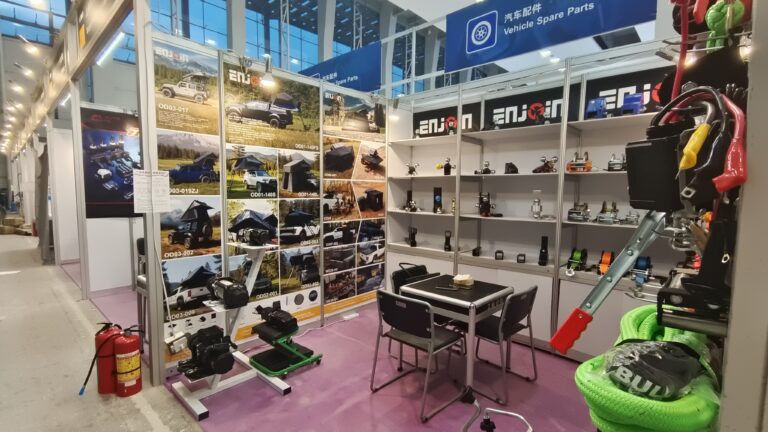Importing rooftop tents can be a great business opportunity — if you know what’s trending and what buyers really want. Good research helps you avoid costly mistakes and find the right products at the right price.
Many new importers jump in too fast. They see a nice design online, place a big order, then realize later the model doesn’t fit their local market or the total cost is higher than expected. Without clear market data, it’s easy to lose profit instead of gaining it.
The good news? With proper market trend research, you can confidently choose the right rooftop tents, control your costs, and build a successful import business. Let’s go step by step.
How to Choose Good Rooftop Tents For Sale? Where to discover them?
No matter whether you run an e-commerce business or an outdoor equipment store, it’s important to use smart research tools instead of choosing a rooftop tent model just because you like its design.
Doing so helps you pick products that truly fit your customers’ needs and the latest camping trends.
Here are 4 key principles to help you choose suitable rooftop tent products for import:
Principle 1: Products that bring real value and meet users’ needs
Before you decide which rooftop tent to import, ask people who actually go camping or overlanding about what they value most.
Their feedback will tell you what’s practical in real outdoor use.
💡 Example:
If you are not an off-road camper yourself, talk to outdoor enthusiasts about their experience — do they prefer hard shell or soft shell tents?
They may tell you they want a tent that’s easier to set up, lighter to carry, or big enough for family. That’s the kind of insight you can’t get from just looking at catalogs.
Principle 2: Products that are not easily available locally
Rooftop tents are still a new concept in many countries. While outdoor lovers show strong interest in them online, few local stores actually sell them.
That means you have a great chance to be one of the first to introduce rooftop tents to your market.
💡 Example:
If you notice people in your area talking about camping or watching rooftop tent videos but can’t find any local sellers, that’s your opportunity.
You can import and sell rooftop tents to meet this hidden demand — becoming an early supplier before competitors enter the market.
Principle 3: Products you can improve or customize to be unique
It’s common to see many sellers offering the same tent models. To compete, choose tents that you can upgrade or personalize.
💡 Example:
Add your own features like branded fabric colors, custom logos, integrated LED lighting, or improved mattress comfort.
Small design changes can make your product feel premium — allowing you to sell at a higher price and build brand recognition.
Principle 4: Products already proven in the market
If you’re new to the rooftop tent business, start with models that have already sold well in other markets.
Choosing proven designs reduces your risk and helps you learn about logistics, demand, and after-sales service.
💡 Example:
You might start with a best-selling ABS hard shell tent that’s popular in Australia and the U.S. Once you gain experience, you can introduce your own new models or accessories, such as awnings or annex rooms.
Choosing the right rooftop tent to import isn’t about luck — it’s about understanding your market and making smart, data-based decisions. By following these 4 principles and using e-commerce research tools, you can find products that are valuable, unique, and profitable. For example, Google Trends is one of my favorite free research tools. Here’s a quick guide on how to use it:
1. Use Google Trends to Research Market Demand
Google Trends is a free and powerful tool that helps you understand what people are searching for on Google — and how that interest changes over time and across regions. It’s especially useful for spotting seasonal trends, identifying growing products, and planning your stock and marketing strategy.
Let’s use “roof top tent” in USA as an example.
Step 1: Go to Google Trends and Enter Keywords

Visit trends.google.com and type your product keyword into the search bar — for example, “roof top tent.”
Step 2: Adjust Your Search Settings

You can customize your search to get more accurate insights:
-
Location: Select a specific country like United States, or choose Worldwide for global data.
-
Time Range: For a long-term view, select 2004 – present. To analyze recent patterns, choose past 5 years.
-
Search Type: You can choose Web Search, Shopping, or YouTube Search depending on your business focus.
Step 3: Interpret the Data

When searching “rooftop tent” in the United States, here’s what we can learn from the results:
-
Interest Over Time:\
The chart shows a steady rise in searches from 2015 onward, peaking during the pandemic period when outdoor and self-contained travel became very popular. Although it slightly leveled off afterward, the demand remains strong — proving rooftop tents are not just a passing trend. -
Seasonality:\
Looking at data from the last 5 years, search volume consistently peaks during spring and summer, then declines in winter. This tells you it’s a seasonal product.\
👉 What this means for you: Plan your purchasing and production ahead of the season. For example, if your target market is the U.S., you should place orders in September–October to be ready for the following spring sales. -
Interest by Region:\
The map highlights Alaska, Utah, Montana, Colorado, and Wyoming as the top sub-regions with the highest search interest. These are all regions with active camping and off-road communities — valuable clues for targeting your marketing campaigns or distributor outreach. -
Related Topics and Queries:\
Google Trends also shows associated topics and search terms such as “roof rack,” “hard top rooftop tent,” and “Jeep rooftop tent.”\
👉 Use these to find new keyword ideas for SEO or to expand your product line to match related interests (like roof racks or overlanding accessories).
Step 4: Apply the Insights
Once you’ve gathered this data, you can use it to:
-
Forecast demand and align production or purchasing with seasonal peaks.
-
Focus marketing efforts on top-performing regions.
-
Create relevant content or ads using related queries and rising search terms.
-
Compare different product types (e.g., “soft shell vs hard shell rooftop tent”) using the “Compare” button to identify which one has higher market interest.
In short, Google Trends helps you turn search data into actionable business decisions — from inventory planning to marketing focus — with just a few clicks.
2. Product price research
When you find some rooftop tent models that interest you and want to research their wholesale prices from Chinese manufacturers, at this stage, an approximate wholesale price is enough for you.
When researching rooftop tents, you can start by typing keywords like “rooftop tent” or “hard shell rooftop tent” on Alibaba.com to see different models and suppliers.

You can also upload a rooftop tent photo to search for similar products and locate the factory that makes them.

Rooftop tents are usually made to order and customized according to size, material, and color. So, you’ll need to contact suppliers directly to get a real quotation.
Some suppliers may show very low prices (for example, $100–$200) just to attract your inquiry. These are not real wholesale prices — the actual price for a full-size rooftop tent usually starts from $400–$600, depending on the material and structure.
However, keep in mind that some suppliers get high visibility by buying ads. This means that the top results on Alibaba don’t always represent the most reliable or experienced manufacturers.
That’s why searching on Google can often be a better and more reliable choice.

Try searching phrases like “rooftop tent manufacturer in China” or “rooftop tent factory China”. You’ll often find real factory websites, not just trading companies. These websites usually include detailed company backgrounds, production photos, certifications, and project cases, which make it easier to evaluate whether they’re a genuine manufacturer.
In short, Google gives you a wider and more transparent view of the market, while Alibaba focuses more on product listings. Using both together can help you find trustworthy suppliers and more realistic wholesale prices.
Besides understanding the approximate price, another key step in selecting products is identifying whether the price range fits your market and profit margin.
Generally, the retail price of rooftop tents in developed countries is about 3–6 times the wholesale price from Chinese factories. For example, if a rooftop tent costs $500 wholesale in China, its retail price in the U.S. may reach $1,500–$3,000.
For smaller outdoor accessories, the gap is even larger. For example, a camping LED light with a wholesale price of $5 in China may retail for $25–30 in the U.S. But for high-end rooftop tents priced at $1,000 wholesale, the retail price could reach $2,000–4,000, depending on the brand and market.
3. Shipping Solution and Cost Research
Usually, there are four main shipping methods from China: international express, air shipping, sea shipping, and railway shipping.
As a new importer of rooftop tents, the most suitable and economical options are sea shipping or railway shipping (for nearby countries). International express is fast, but it’s only practical for sample orders because rooftop tents are bulky and heavy.
International express services such as DHL, FedEx, or UPS usually deliver from China to the U.S. in about 7 days. However, the cost is high — roughly $6–$7 per kilogram for shipments over 20 kg. Fees are charged based on whichever is larger: the actual weight or the dimensional (volume) weight.
For example, a standard rooftop tent weighing 60 kg with a packaging volume equivalent to 150 kg would cost about $1,000 (150 kg × $6.8) to ship by express. Clearly, this is not a practical option for tents, as the shipping fee alone is higher than the product’s cost.

Sea freight is the most common and cost-effective shipping solution for rooftop tents. The shipping time from China to the United States is about 30–35 days, and the average total cost is around $200–$300 per cubic meter (m³), including shipping fees and customs charges.
Most freight forwarders require a minimum shipment volume of about 2 m³. One rooftop tent typically occupies 0.5–1.5 m³, so 2-4 tents can already fill a shipment. For larger orders, the per-unit shipping cost becomes much lower.

For example, if sea shipping costs $250 per m³, then the shipping fee per tent is about $350–$400. Compared with air or express shipping, sea freight can save you over 70% of transportation costs.
Keep in mind that rooftop tents contain metal frames, fabric, and accessories, which are generally allowed in sea freight and railway shipping, but some shipping lines may restrict lithium battery accessories (such as lights or fans).ENJOIN rooftop tents normally don’t contain lithium batteries, only USB-chargeable LED lights, so they can be safely shipped by sea or air without restriction. Always confirm this with your freight forwarder and supplier before booking.
From all this information, you can roughly estimate the sea freight or express shipping cost for each rooftop tent you plan to import, and choose the most suitable solution based on your order size.
4. Importing & Selling Qualification Research
Besides shipping methods and costs, another key step is to check whether you have the qualifications to import and sell rooftop tents in your target market.

Qualifications in the Import Process
Before importing rooftop tents, you need to understand if there are specific compliance requirements or certificates. Rooftop tents are outdoor camping products, so most countries don’t have strict certification rules like electronic or medical products.
However, it’s still important to check:
Whether materials (like aluminum, fabric, ladder) meet local safety or fire-resistant standards.
Whether the packaging or labeling complies with local regulations.
If you’re importing in small quantities, customs usually won’t check certificates strictly, but preparing in advance can prevent delays or detention of goods.
The easiest way to get accurate information is to consult your freight forwarder or ask the Chinese supplier directly. They are usually familiar with the import rules of your country.

Qualifications in the Marketplace
Besides import requirements, you also need to confirm if your sales platform (like Amazon, eBay, or your local online/offline store) requires specific documents.
If you plan to sell on Amazon, check whether:
Rooftop tents need safety test reports or certificates to list.
Any similar designs are protected by patents or trademarks.
Selling a rooftop tent with a registered patent can lead to product removal and financial loss.
In recent years, many Amazon sellers have lost money due to patent disputes, especially for unique hard-shell rooftop tent designs.
If you’re selling through your own Shopify website or in offline stores, such issues are much less likely.
✅ Tip: Before placing bulk orders, ask your Chinese supplier if the tent design is original or patented. This small step can help you avoid unnecessary risks and save a lot of money later.
5. All Cost Breakdown
As mentioned above, the retail price in other countries is often 4–6 times higher than the Chinese factory wholesale price. But that doesn’t mean you’ll have a high profit margin. The factory price is only part of the total cost. So, doing a cost breakdown before placing an order helps you know if importing rooftop tents is profitable.
Sample Cost
For rooftop tents, the sample price is usually around $500–$1500, depending on size and design. It’s important to test the quality before bulk purchase.
Product Cost
This is the factory wholesale price. A soft shell rooftop tent package (around 140–150 cm size) usually costs less, while hard shell models (starting from 220 cm) are more expensive.
Certification Cost
Most rooftop tents don’t require special import certificates, but you should confirm with your freight forwarder or customs if safety or material standards apply in your country.
Shipping Cost
Rooftop tents are large and heavy, so shipping costs take a big part. Air freight is fast but expensive — sometimes even higher than the product cost. Sea shipping is cheaper for bulk orders.
Import Tariff
Tariffs differ by country. For example, importing rooftop tents to the U.S. may have around 5%–10% duty. You can check it on your local customs website or ask your freight forwarder.
Marketplace Cost
If you sell on platforms like Amazon, expect 15%–20% referral fees plus storage and shipping costs. If you sell through your own website or local store, these costs will be lower, but you’ll still need some budget for ads and promotion.
In Short
If your net profit can reach 20%–30%, it’s a good business. You can earn more by selling unique designs or building your own rooftop tent brand.

Now it’s your turn
You should realize that importing and selling rooftop tents requires careful research before choosing the right model, size, and supplier. I hope this guide helps you make better decisions. If you have any questions about rooftop tent product research, feel free to leave a comment and contact us.
If you want to import rooftop tents from China, feel free to contact us for assistance. ENJOIN is one of the leading rooftop tent manufacturers and suppliers in China. With rich experience in global exports, we can guide you through the sourcing, shipping, and importing process to make it smooth and hassle-free.








